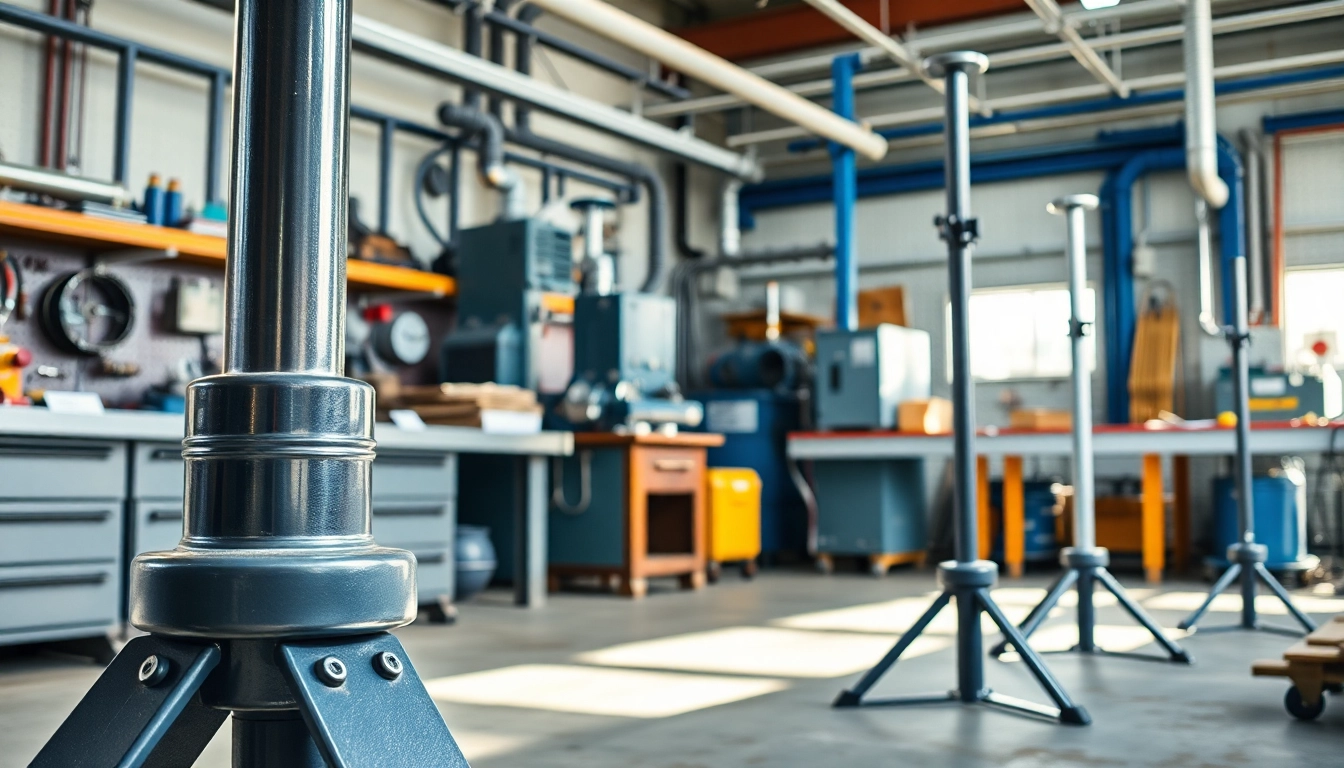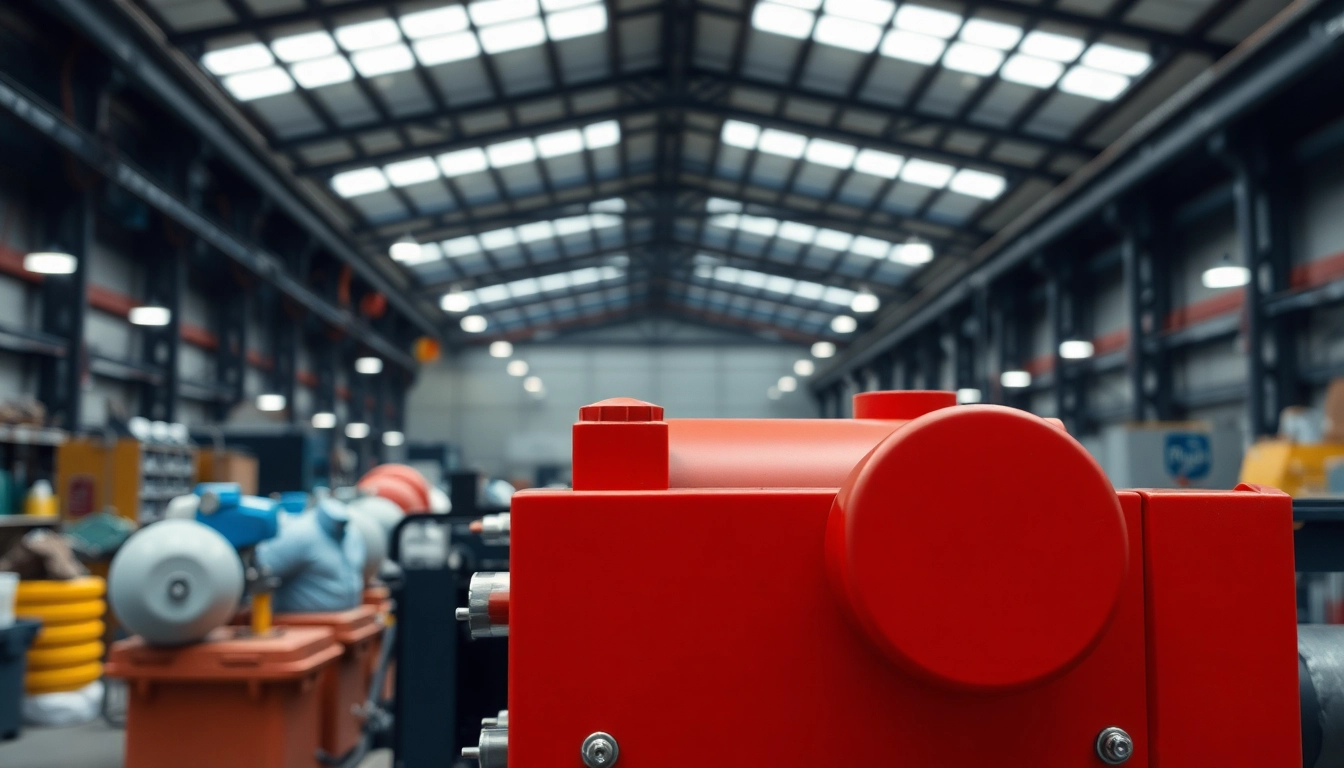Understanding Precision Die Cutting
Precision die cutting is a sophisticated manufacturing process that involves the creation of precisely shaped and sized components from a variety of materials. It employs specialized tools and machinery, ensuring accuracy and quality in end products. This technique is particularly valuable across various industries, enabling the production of custom parts and packaging solutions that meet specific requirements. Organizations looking to enhance their production capabilities often turn to precision die cutting services for high-quality manufacturing solutions.
What is Precision Die Cutting?
At its core, precision die cutting is a method that involves the cutting, shaping, and fabrication of materials using a die—an instrument designed to create specific shapes and sizes. In this process, materials such as paper, plastic, metals, and foams are fed into specialized die-cutting machines, which then cut them into predefined designs. This technique is widely utilized for producing everything from intricate parts for automotive applications to packaging components in consumer goods.
Benefits of Precision Die Cutting
- High Precision: As the name suggests, precision die cutting offers unmatched accuracy, allowing manufacturers to create complex shapes with minimal tolerances.
- Cost-Effectiveness: For high-volume runs, die cutting can be more economical compared to other methods, especially when it comes to production speed and material efficiency.
- Material Versatility: Precision die cutting can accommodate a vast range of materials, enabling customization for different applications across multiple sectors.
- Enhanced Quality: The use of advanced machinery and technology improves the overall quality of the manufactured components, ensuring consistency and reliability.
- Quick Turnaround: The efficiency of the die cutting process results in faster production cycles, making it ideal for urgent or bulk orders.
Applications in Various Industries
Precision die cutting finds applications across a diverse range of industries. Here are examples of how different sectors utilize this technology:
- Automotive: Components such as gaskets, seals, and interior decorative parts are often created using precision die cutting, ensuring tight tolerances required in automotive applications.
- Medical: In the medical field, precision die cutting is critical for creating surgical instruments and medical device components that require stringent quality standards.
- Pharmaceutical: Packaging for medications often relies on precision die cutting to produce blister packs and labels that meet precise specifications.
- Electronics: The production of enclosures, insulation materials, and circuit board components greatly benefits from the accuracy provided by precision die cutting.
- Consumer Goods: From packaging to promotional items, precision die cutting is vital for creating aesthetically pleasing and functional products that meet consumer expectations.
Components of a Precision Die Cutting Process
Materials Suitable for Die Cutting
The materials used in precision die cutting play a significant role in the quality of the end product. Some commonly die-cut materials include:
- Papers and Cardboards: These are widely used in packaging and promotional materials.
- Plastics: Various types of plastics, including PET, PVC, and acrylics, are suitable for creating components in packaging and electronics.
- Foams: Foam materials are often die-cut for insulation, cushioning, and packaging applications.
- Metals: Thin sheets of metal can be precision die-cut for various industrial applications.
- Rubbers: Rubber materials are common in sealing solutions and gaskets due to their pliable nature.
Types of Die Cutting Techniques
Three primary types of die cutting techniques are commonly utilized in precision manufacturing:
- Flatbed Die Cutting: Involves the use of a flat surface where the material is placed, and the die is pressed down to cut the material. This method is ideal for larger cuts and thicker materials.
- Rotary Die Cutting: Utilizes a cylindrical die that cuts as it rolls over the material, best for high-speed production and creating intricate shapes.
- Laser Die Cutting: Employs laser technology for cutting, offering high precision and the ability to create detailed designs without the need for physical die tools.
Machinery Involved in Precision Die Cutting
The machinery employed in precision die cutting varies based on the technique used. Here’s an overview of key machinery:
- Die Cutting Press: Essential for flatbed die cutting, these hydraulic or mechanical presses apply controlled pressure to ensure accurate cutting.
- Rotary Die Cutter: Specifically designed for rotary die cutting, these machines are equipped with a cylindrical die and are typically used for continuous material feeds.
- Laser Cutters: Advanced machines that utilize laser technology for cutting complex shapes, offering flexibility and high precision across various materials.
Choosing the Right Die Cutting Service
Factors to Consider When Selecting a Provider
Choosing the right die cutting service is integral to the success of your project. Here are some critical factors to focus on:
- Expertise and Experience: Look for providers with a proven track record in precision die cutting and relevant industry experience.
- Quality Assurance: Evaluate their quality control measures to ensure that they adhere to high manufacturing standards.
- Technology and Equipment: Investigate the types of machinery they use, as modern and well-maintained equipment can enhance precision and speed.
- Customer Support: Strong communication and support during the design and production processes can make a substantial difference in project outcomes.
Common Mistakes to Avoid
When selecting a die cutting service, avoid common pitfalls such as:
- Overlooking Material Compatibility: Not all die cutting services are equipped to handle every material. Ensure your chosen provider has the right capabilities.
- Ignoring Sample Production: Request samples before finalizing your order to gauge the quality and precision of their work.
- Failing to Define Specifications Clearly: Clarity in your design specifications is crucial to avoid miscommunications and errors in the final products.
Evaluating Quality and Cost-Effectiveness
It’s essential to balance quality and cost when selecting a die cutting provider. Here are strategies to evaluate:
- Request Quotes: Obtain multiple quotes to compare pricing structures while keeping an eye on the quality offered.
- Review Previous Projects: Assess the provider’s portfolio to understand their capabilities and quality of work.
- Consider Total Cost of Ownership: Factor in not only the initial cost but also potential long-term savings from high-quality cuts and reduced waste.
Best Practices for Successful Die Cutting Projects
Design Considerations for Optimal Results
Effective design plays an important role in die cutting success. Consider these best practices:
- Design for Manufacturability: Ensure your designs are optimized for manufacturing processes to facilitate easier cutting.
- Keep Tolerances in Mind: Discuss and establish necessary tolerances with your manufacturer early on in the design process to ensure compatibility with die cutting capabilities.
- Utilize Prototyping: Create prototypes of your die-cut components to evaluate fit, form and function before mass production.
Implementing Quality Control Measures
To minimize errors and ensure the quality of die-cut products, incorporate these quality control measures:
- Regular Calibration of Equipment: Ensure that die cutting machines are calibrated regularly to maintain precision and efficiency.
- Conduct Material Inspections: Inspect materials upon delivery to verify quality and compatibility for die cutting.
- Use Checklists: Implement checklists for quality assurance throughout the production workflow to catch potential errors early.
Understanding Tolerances and Specifications
Tolerances are crucial in die cutting to ensure that parts fit as intended. Understand and communicate the following:
- Typical Tolerances: Be aware that common tolerances for precision die cutting can range from +/- 0.005 inches to +/- 0.010 inches depending on the material and process.
- Clear Communication: Specify all necessary tolerances in detail when placing orders with your provider to avoid any misinterpretations.
- Iterative Feedback: Maintain open lines of communication with your provider during production to address any potential deviations from specified tolerances promptly.
Future Trends in Precision Die Cutting
Technological Advancements in the Field
The landscape of precision die cutting is evolving rapidly with advancements in technology. Key trends include:
- Increased Automation: The integration of automation technologies allows for faster production cycles and reduced labor costs while maintaining high levels of precision.
- 3D Printing Integration: The intersection of die cutting and 3D printing technology enables manufacturers to explore hybrid approaches for complex design requirements.
- Smart Die Cutting Machines: Technologies such as IoT (Internet of Things) are leading to the development of smart machines that can monitor performance and predict maintenance needs.
Environmental Considerations
As industries move towards more sustainable practices, precision die cutting adapts through:
- Material Innovation: Manufacturers are increasingly using eco-friendly materials, such as biodegradable plastics, in die cutting processes.
- Minimized Waste: Advanced cutting techniques enhance material utilization, reducing waste and improving overall sustainability.
- Recycling Programs: Many companies are implementing programs to recycle scrap materials generated from die cutting operations.
Shifts in Industry Demands and Custom Solutions
The need for customized solutions continues to grow across various industries, with trends showing:
- Increasing Customization: Clients are seeking tailored die-cut solutions that meet specific needs rather than off-the-shelf products.
- Rapid Prototyping: The demand for rapid prototyping services is growing, as businesses want to test designs and concepts more quickly.
- Collaboration with Designers: Stronger collaboration between manufacturers and designers leads to innovative solutions, optimizing the die cutting process from concept to production.


